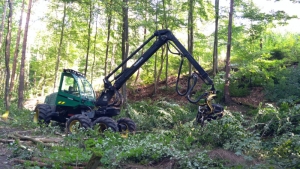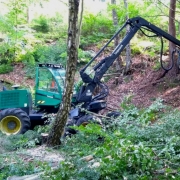SGGW field trip for silviculture case study
Partners from SGGW visited case study areas for the silvicultural work package (WP2) in the Polanów Forest District to identify most productive silvicultural systems, techniques and technologies and assess them.
This State Forest District is located in the northern part of Poland, with about 91,000 m3 of wood harvested annually, mainly pine, beech, spruce and birch. The field meeting was a great opportunity to interact with the local state foresters and owners of private forest companies. Possibilities of improvements in the efficiency of forest operations with regards to socio-economic changes occurring in Poland were discussed. One of the phenomena that need to be faced is a lack of labour force. Details like comparison of manual thinning (chainsaw and tractor/skidder) and thinning with machinery (forwarder and harvester) from an economic point of view and efficiency in different site conditions were also discussed.
Read the full report at the Polanów State Forest district web page (in Polish):
http://www.polanow.szczecinek.lasy.gov.pl


 SGGW
SGGW